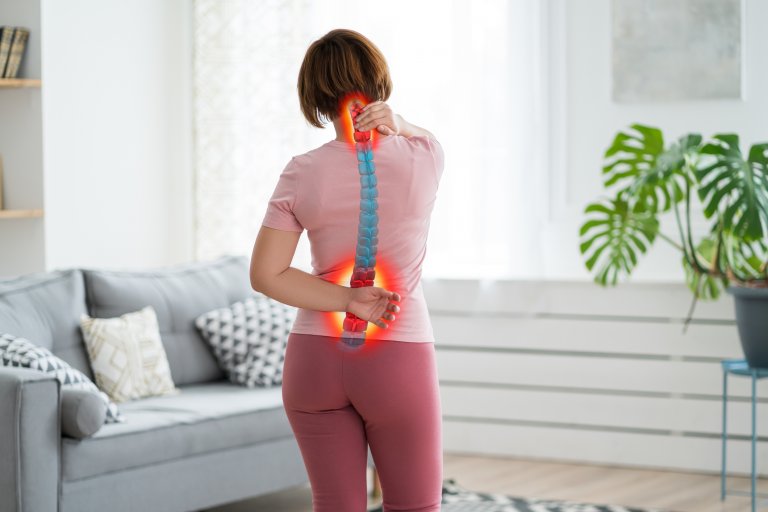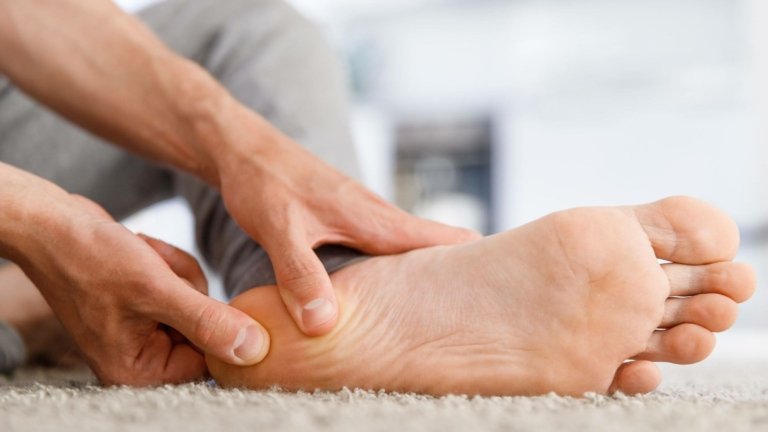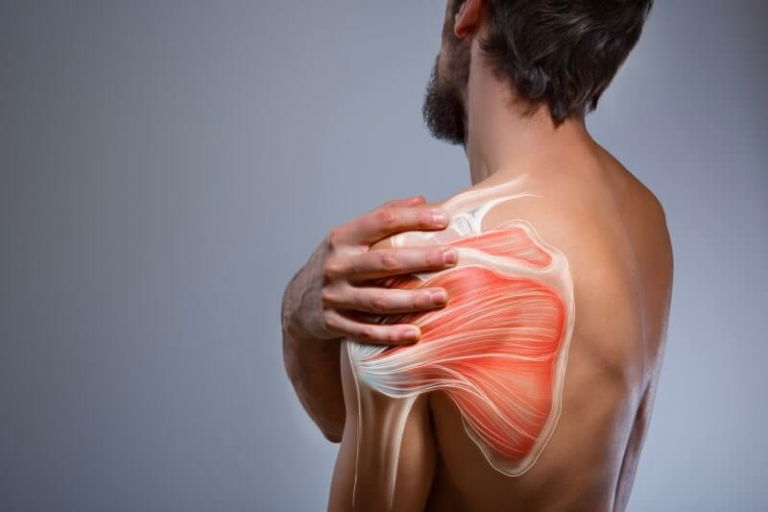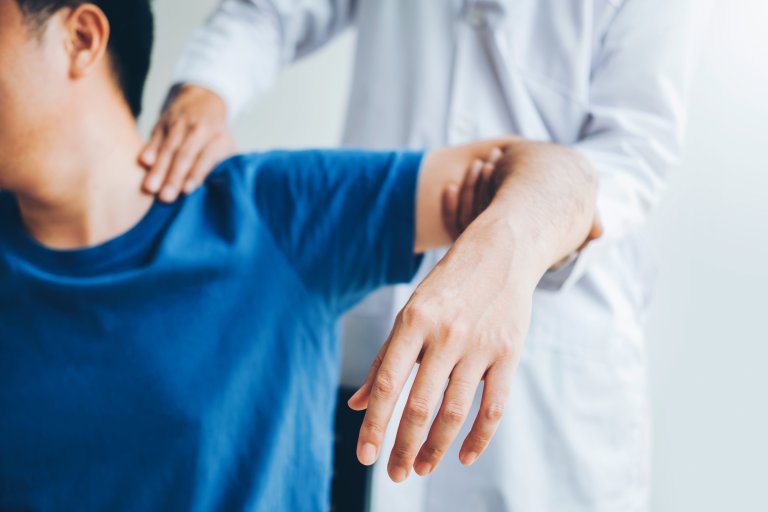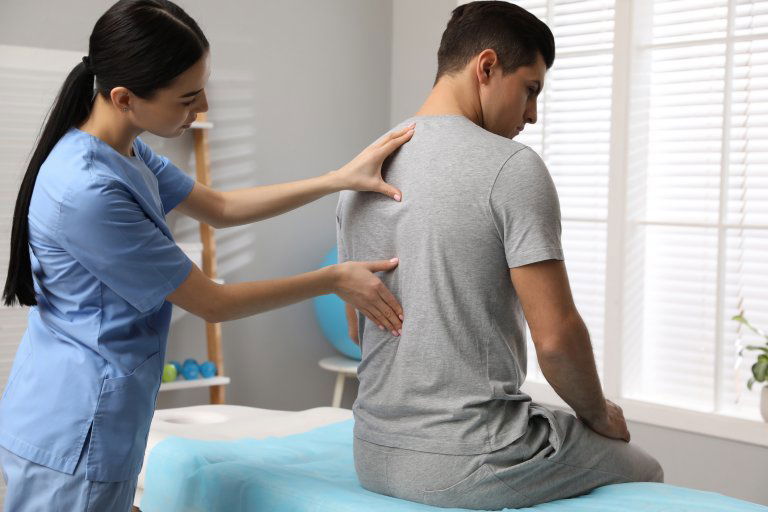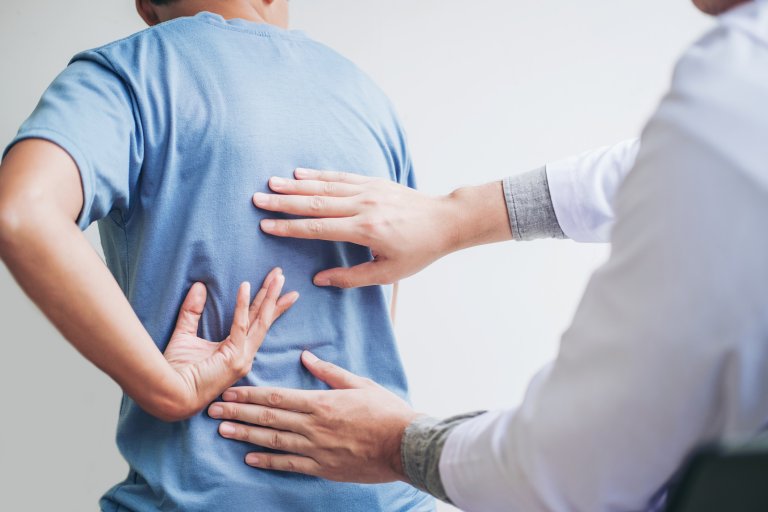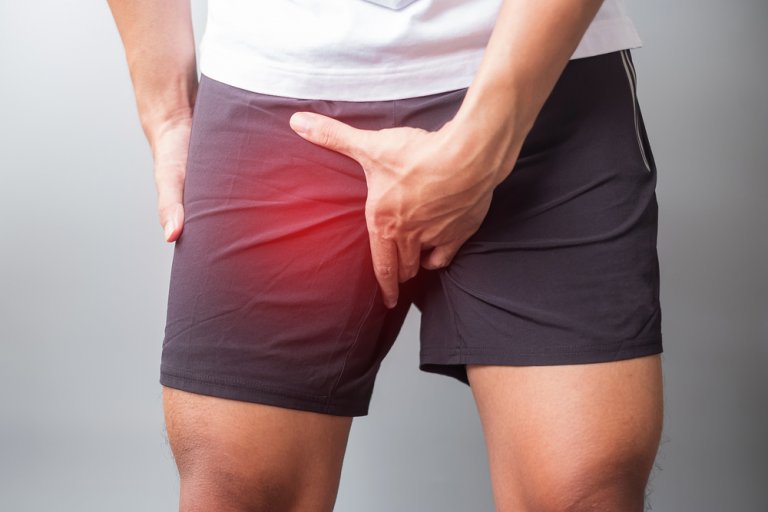Manual therapy has a relatively long history in the physiotherapy profession. It is considered a technique where the manual therapist uses his/her hands and specific techniques to influence the muscular-neurological system. Approaches, techniques and explanations of the mechanism of action of manual therapy have changed over time.
Initially, the effects of manual therapy were only explained in terms of bio-mechanical tissue changes, but nowadays there is more and more talk about the psycho-neuro-physiological changes that the manual therapist induces with his/her hands (1).
Manual therapy is provided by a physiotherapist or manual therapist. The therapist uses pressure and special manual techniques to manipulate the joints, muscles and connective tissues and, as a result, the nervous system. The aims of manual therapy are to reduce dysfunctions of the musculoskeletal system. Often these are pain, increased muscle tension and inappropriately mobile joints.
At Medicofit, manual therapy techniques are used in treatment programmes for post-operative, pre-operative and chronic pain conditions. After various orthopaedic surgical procedures, joint mobility is impaired and muscle balance is disturbed. Manual therapy successfully helps us to re-establish functional movement patterns.
The problem of overstretched muscles and limited mobility is also often encountered in chronic degenerative pain conditions – either as a cause or as a consequence. In this case, manual therapy techniques can also be integrated into the rehabilitation plan in a meaningful and effective way.
Brief history of manual therapy
Healing with the hands goes back deep into history. Manual therapy has a long tradition and is one of the oldest recorded interventions in medicine. There are records from ancient Egypt describing the relief of pain by moving joints. The first description of massage dates back to 2598 BC and was given to a Chinese emperor.
Hippocrates, in his writings (460 BC), also mentions massage and manipulation techniques as an effective therapy for treating limited joint mobility. In the 19th century, osteopathy and chiropractic are established, and in the 20th century, more modern explanations, methods and techniques are found, which form an important basis for today’s work in physiotherapy.
What does manual therapy mean today?
Manual therapy studies the function of the motor system. The aim of manual therapy is to correct or prevent functional disorders that arise. However, as a prerequisite, the manual therapist must carry out a good diagnosis.
Diagnosis is carried out by examining the joint and identifying the part of the joint that is the cause of the disorder. It is necessary to find out if the disorders of the locomotor system can be positively influenced by manual therapy and if so, appropriate treatment should follow. Only on the basis of good diagnosis and clinical decision-making will the effects of manual therapy be successful.
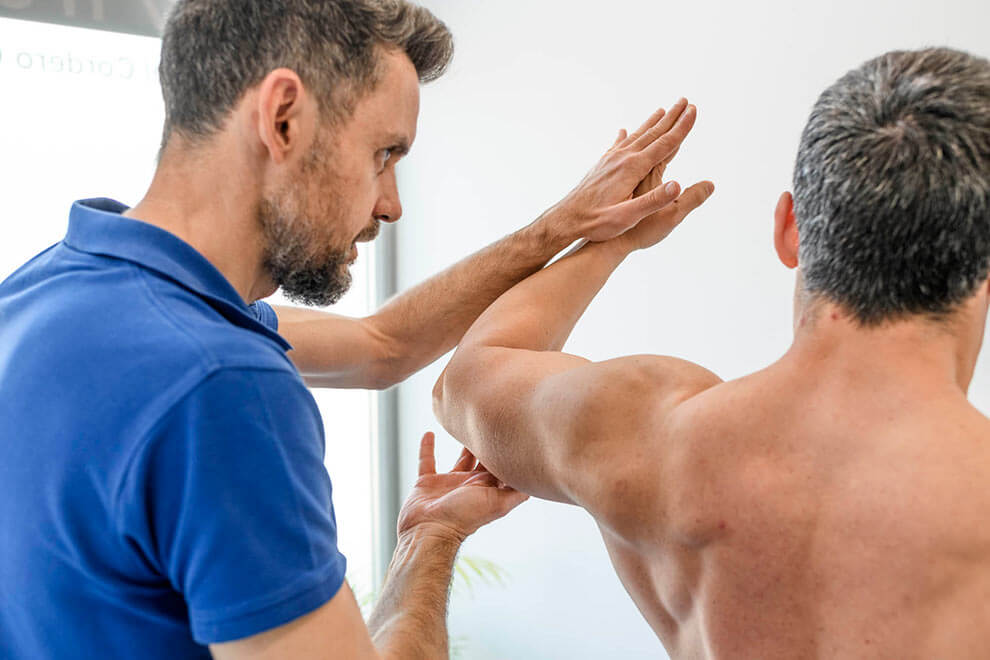
The importance of activity for the human body
Tissues in the body respond to the stimuli we provide. If we supply a minimum stimulus, the body’s abilities will be reduced. If we repeatedly add a given stimulus, bodily functions will be maintained. A moderate stimulus stimulates or increases them (this is what we want to achieve with training). A strong stimulus inhibits bodily functions and a very strong stimulus suspends them (this is when the tissue is damaged). This is how tissue adapts to change and changes accordingly. In the process of rehabilitation, we are dealing with tissue that has received too little or too intense stimulus.
In the case of a patient who is little active or inactive, we are dealing with weak muscles and connective tissue that do not support the skeletal system sufficiently during movement, and can therefore be injured more quickly. The easiest example to imagine is that of a patient who is ordered to rest due to a surgical procedure or other medical condition. In addition to losing muscle strength, his joints will become stiff, contractures may occur and degeneration may be a result.
Tissue overload
On the other hand, we have the problem of overloading the tissues – that is, the body, which is being overstimulated. This is not only a problem for athletes, but we are also only thinking of parts of the body that we are putting too much strain on for the organism’s ability. We can imagine an office worker who spends most of his time sitting down, using a computer mouse all the time. To use it, he has to hold his wrist in a specific position.
When this static position is too much and for too long, the response of the tissue is manifested as a result of changes in the composition of the ligament or in its length, and at the same time, all of this is reflected in the biochemical and neurological processes that take place inside. Manual therapy can help us to deal with these kinds of problems.
What are the effects of manual therapy
Manual therapy can have a significant impact on the cases described above, and the techniques are chosen according to the goal. If we have a problem with reduced mobility, which is often the case after surgery, manual techniques can effectively help to increase mobility. Manual therapy also has the effect of reducing tissue inflammation and reducing pain.
The use of touch encourages the patient to move correctly and thus improves the quality of movement. After injury and/or surgery, the body often has to relearn movement patterns and in the initial stages, the manual therapist can improve and facilitate learning through guidance and direction (1). In general, we aim to restore optimal body function through a variety of techniques and approaches.
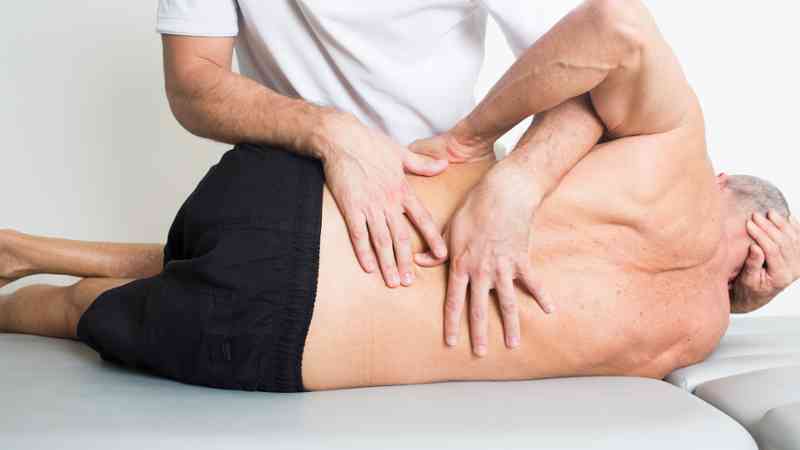
How are manual therapy effects reflected inside of the body?
The effects of manual therapy in a biomechanical sense are reflected in the influence on tissue compliance and body fluid dynamics. Think of a twisted ankle that swells up a lot. The swelling itself hinders ankle mobility. Lymphatic drainage techniques, which are also manual techniques, influence the movement of the lymph and thus prevent or reduce lymphatic retention.
The physiological effects of manual therapy are to alter joint pressure and muscle tension through stimulation of muscular mechanisms, and to alter the sensation of pain itself through the pain system, resulting in a reduction in pain.
Effects on the neurological system
More and more research has also been carried out in recent years on manual therapy and its effect on the neurological system. The primary function of the nervous system is to receive information from the environment, transmit it to the central part (the brain or spinal cord), receive the information, process the information and return a response to it.
All these functions need to work in harmony for smooth functioning. The network of nerves crosses almost every structure in the body and is thus subject to mechanical stress. At the same time, the nervous system is influenced by other body systems. In the case of peripheral pain, manual therapy has an effect on reducing the pain inflow and the irritation of the pain receptors, which means that through vibration, massage, heating, etc., we influence better circulation and thus less inflammatory mediators that stimulate the pain receptors in the tissue.
We can also influence other parts of the pain pathway. The emotional component and thus the impact on pain should not be neglected. Manual therapy relaxes the patient, they pay attention to their body and, if they trust the physiotherapist, a positive environment is created which has a good effect on their well-being and the rehabilitation process itself (1).
Manual therapy techniques
Manual therapy includes soft tissue techniques under which we can classify therapeutic massage, various fascial techniques (e.g. Trigger point therapy, Ergon technique, transverse friction and others) and lymphatic drainage. There are also various neuromuscular techniques used when the neuromuscular system restricts movement.
Among them, the PNF technique is quite well known, where the appropriate neuromuscular response is facilitated through manual contact in specific directions, and in a specific time component and with resistance. The manual therapist can also use specific manual techniques to influence the movement of the joints of the limbs and the joints of the spine.
Manual therapy is a successful treatment at the Medicofit clinic:
- sacroiliac joint dysfunctions,
- painful lumbar spine syndrome,
- lower back pain,
- knee and hip pain,
- tennis and golf elbow,
- shoulder and wrist pain,
- neck pain,
- sciatica symptoms and groin pain.
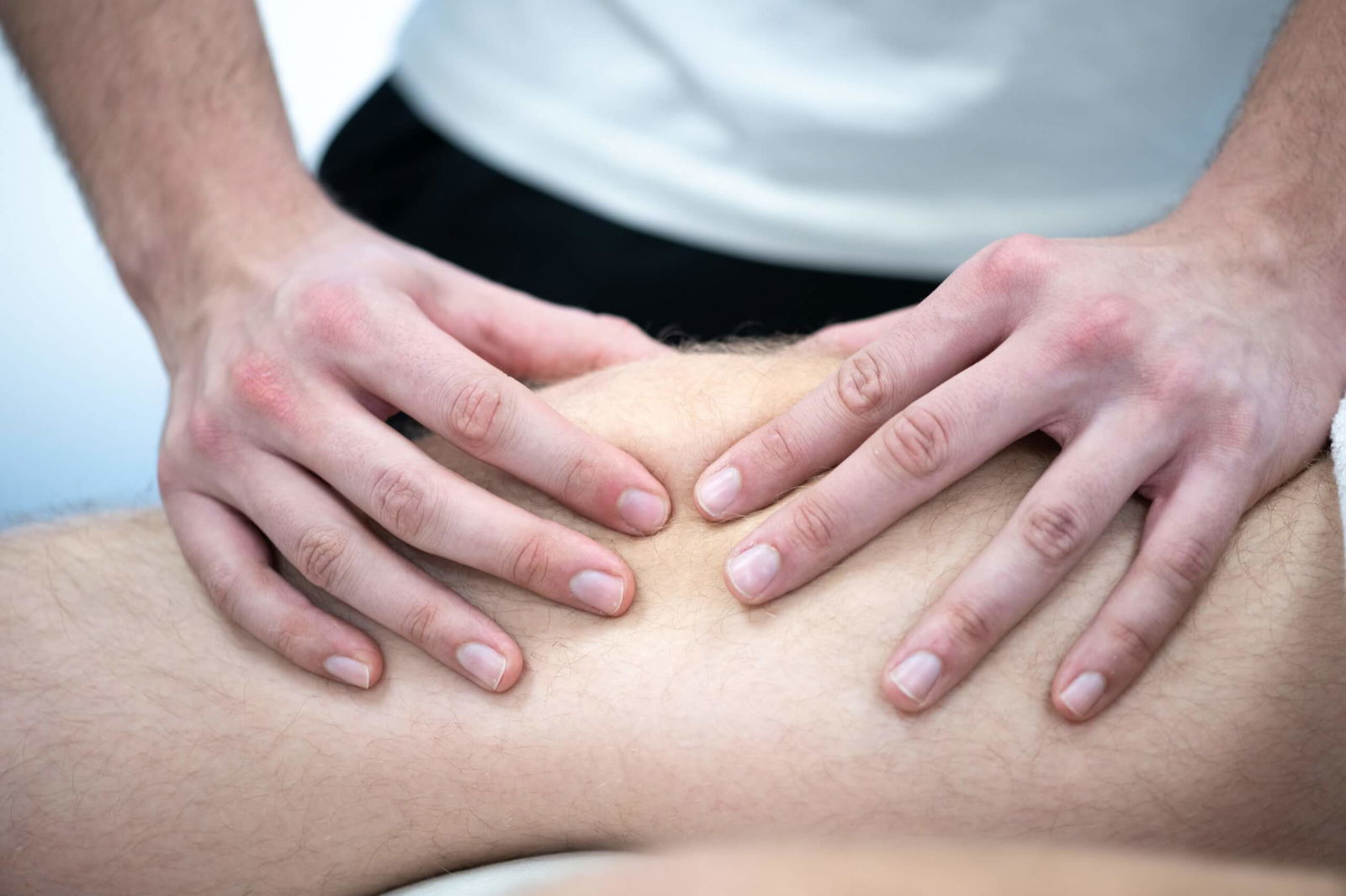
Manual therapy at Medicofit is provided by qualified physiotherapists who work according to the principles of evidence-based practice. This means that they receive regular training and are up-to-date with current scientific literature and practice. The field of rehabilitation is evolving rapidly.
New technologies, new approaches and new interpretations are emerging, and it is necessary to stay “on the lookout” at all times. There is also a growing number of marketing ploys in the field of sport and rehabilitation to attract clients with pain with various “miracle approaches”, which often are not. They bring a lot of dissatisfaction and empty pockets.
At Medicofit, we strive to deliver quality rehabilitation that is science-based and patient-centred. We are guided by two constants in our work: innovation in healthcare work processes and research into successful physiotherapy practices, which also include manual therapy, provided that it is integrated into the rehabilitation process in a meaningful way.
Manual therapy at the Medicofit clinic is used in a complementary way
It means that at Medicofit, manual therapy techniques are always used in conjunction with other methods and interventions to achieve the desired result efficiently and effectively. Physiotherapists will work with both manual and instumental therapies, using different devices to influence the tissue in terms of healing, remodelling or regeneration.
The instrumental techniques used at Medicofit include high energy laser therapy, deep shock wave therapy, TECAR therapy, magnetotherapy and electrotherapy. Physiotherapy treatment will also always include kinesiotherapy – selected physical exercises to rehabilitate the injury or condition (2).
Medicofit’s experts are specialists in tailoring individual treatment protocols and specialising exercises according to the type of injury, the causes of the injury, the surgical techniques performed, the patient’s physical fitness and their personal goals. We use a variety of methods to help us achieve our goals, including manual therapy, which is proving to be successful and indispensable.
- Huijbregts PA. Manual therapy. InPain Procedures in Clinical Practice 2011 Jan 1 (pp. 573-596). Hanley & Belfus. Available from: https://www.sciencedirect.com/topics/medicine-and-dentistry/manual-therapy (accessed 30.6.2022)
- Lin I, Wiles L, Waller R, Goucke R, Nagree Y, Gibberd M, Straker L, Maher CG, O’Sullivan PPB. What does best practice care for musculoskeletal pain look like? Eleven consistent recommendations from high-quality clinical practice guidelines: systematic review. Br J Sports Med. 2020 Jan;54(2):79-86. doi: 10.1136/bjsports-2018-099878. Epub 2019 Mar 2. PMID: 30826805.



